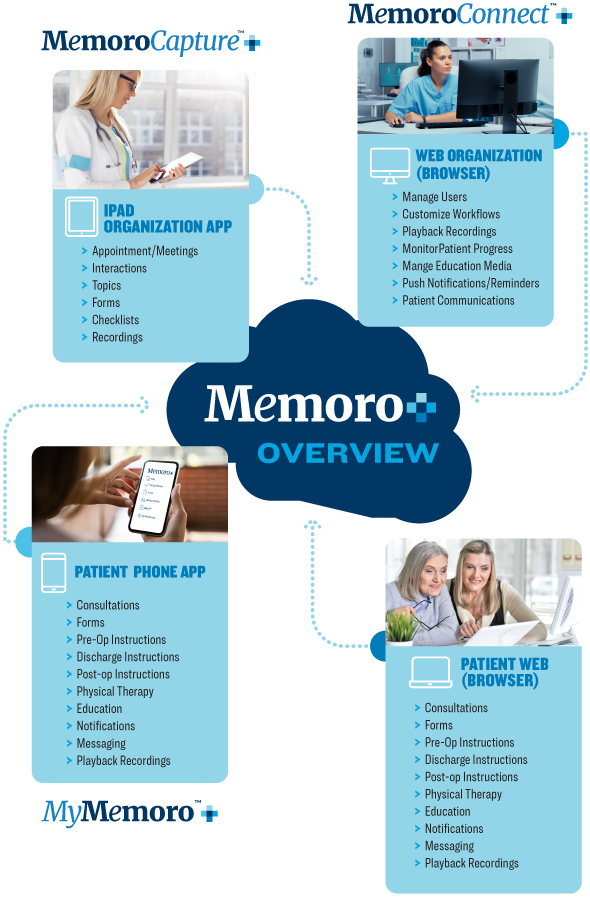CONFUSION VS. CARE CONFIDENCE

The hopeful result of every Clinical Staff - Patient Interaction, is that these communication-interactions will lead to some level of Patient Education, Understanding, Compliance, and an optimal Recovery and Outcome.
The reality, which every healthcare provider has experienced, is that these interactions often result in communication breakdowns, leading to one or a combination of issues:
- Patient Complications
- Wasted Clinical Staff Time
- Added per-Patient Episode Costs
- Unnecessary Consequences, ER visits, missed Appointments
- Avoidable Readmissions
- Negative Patient Experience
- Decreased Patient Satisfaction
- Reduced Consistency of Care
- Legal/Liability Concerns
- Reduction in Patient Quality of Care
- Negative Impact on Patient Outcomes

Studies have shown that a majority of patients remain confused about their health care plans after being discharged from the hospital. …A substantial proportion of medical information is forgotten immediately after discharge.
— Federal Practitioner
Communication failures in United States hospitals and medical practices were responsible at least in part for 30% of all malpractice claims, resulting in 1,744 deaths and $1.7 billion in malpractice costs over five years.
— Risk Management Foundation of the Harvard Medical Institutions

HOW TO ENSURE CRITICAL
INFORMATION SHARING
“Patient Specific” Care-Instructions, typically include multiple, and often complex care instructions, simple to Medical/Nursing Staff because they perform similar interactions multiple times daily with many patients. However, the reality is, Patients and Caregivers don’t understand and can not remember all of the information shared with them during these clinical encounters.
Clinical Staff can:
- Share all Patient Education Items, Pre-op Required Items, Pre-screening Checklists, Discharge and Follow-up Information
- Track & Monitor Patient progress / status / compliance/outcomes
- Coordinate & Communicate Patient-Specific Care Information/Instructions
- Communicate Directly with Patients - push reminders, critical info, required items, monitor compliance
- Patient Reported Outcomes (PROs) – push directly to patients, track and analyze outcomes, satisfaction, and more
Patients can:
- Access and Review all Patient-specific Care Instructions
- Be notified of Pre-surgery Required Items
- Receive Discharge, Rehab, PT and Recovery Information
- Receive Post-surgery/Discharge Rehab/Recovery Information
- Communicate Directly with Care Team
- Report outcomes/patient-status/real-time concerns or complications
- Receive Education items related to their specific disease/condition



